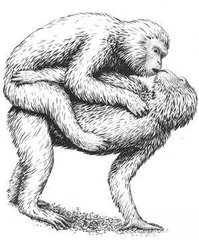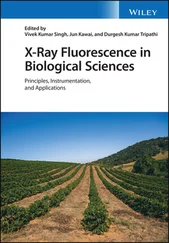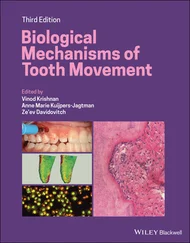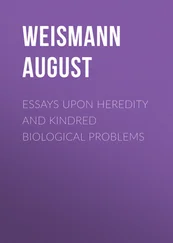The utility of such a system is that homosexuality in any given context (or species) can be seen as the intersection at various points on a number of such axes, thereby allowing comparisons to be made across multiple factors. In this chapter a number of these typological axes will be explored in greater detail to show that both animal and human homosexuality exhibit a comparable variability when examined from virtually every angle. 6Ultimately, we will see that the plurality of homosexualities in both animals and people suggests a blurring of the seemingly opposite categories of nature and culture, or biology and society. On the one hand, it is no longer possible to attribute the diversity of human (homo)sexual expression solely to the influence of culture or history, since such diversity may in fact be part of our biological endowment, an inherent capacity for “sexual plasticity” that is shared with many other species. On the other hand, it is equally meaningful to speak of the “culture” of homosexuality in animals, since the extent and range of variation that is found (between individuals or populations or species) exceeds that provided by genetic programming and begins to enter the realm of individual habits, learned behaviors, and even community-wide “traditions.”
Comparisons between animals and people almost inevitably focus on behaviors that are supposed to be uniquely human. As biologist James Weinrich points out, nearly every behavior that was at one time believed to be practiced only by people has been found to have an analogue among animals—including homosexuality:
There is a long and sordid history of statements of human uniqueness. Over the years, I have read that humans are the only creatures that laugh, that kill other members of their own species, that kill without need for food, that have continuous female receptivity, that lie, that exhibit female orgasm, or that kill their own young. Every one of these never-never-land statements is now known to be false. To this list must now be added the statement that humans are the only species that exhibit “true” homosexuality. Does anyone ever state that we alone exhibit true heterosexuality? 7
While many scientists now accept that animals engage in homosexuality, claims about human uniqueness continue to be made regarding the specifics of homosexual interactions: people, but not animals, engage in exclusive homosexuality, for example; people, but not animals, exhibit greater variety or “genuine” sexual motivation in their homosexuality; people, but not animals, react with hostility toward homosexuality and live in groups segregated by sexual orientation; and so on.
As we come to understand more and more about animal behavior, premature blanket statements like these have generally proven to be naive, if not incorrect—and this is especially true where homosexuality is concerned, since so much still remains to be learned regarding such activities in animals. In this section we’ll address a number of these claims and explore some broader issues surrounding each (this theme will also be taken up in subsequent chapters with regard to the other typological “axes”). While there is some truth to these statements of human uniqueness, none is an absolute line of demarcation between human and nonhuman animals. As always, animal sexuality and social life are far more complex and nuanced than previously imagined: perhaps the only true difference in behavior between the species is that people, but not animals, are prone to make simplistic generalizations.
Exclusively Homosexual, Simultaneously Bisexual: Sexual Orientation
… preferential or obligatory adult homosexuality is not found naturally in any mammalian species other than Homo sapiens .
—W. J. GADPAILLE, 1980
Homosexual human couples who remain together throughout their adult life have few, if any, counterparts in wild mammals as far as is known at present.
—ANNE INNIS DAGG, 1984
Exclusive homosexual behavior appears to be absent among nonhuman primates…
—PAUL L. VASEY, 1995 8
An oft-repeated claim about homosexuality is that exclusive, lifetime, or “preferential” homosexual activity is unique to human beings, or at least rare among animals (especially among primates and other mammals). This is really a question of sexual orientation—that is, to what extent do animals engage in sexual and related activities with members of the same sex without also engaging in such activities with members of the opposite sex? In fact, exclusive homosexuality of various types occurs in more than 60 species of nondomesticated mammals and birds, including at least 10 kinds of primates and more than 20 other species of mammals. 9In this section we’ll consider these various forms of homosexual orientation and compare them to the wide variety of bisexualities that are also found throughout the animal world.
When discussing the question of exclusive homosexuality, several factors need to be distinguished: the length of time that exclusivity is maintained (short-term versus long-term, including lifetime), the social context and type of same-sex activity involved (pair-bonding versus promiscuity in nonbreeding animals, for example), the type of animal involved (e.g., mammal versus bird), and the degree of exclusivity (e.g., absolute absence of opposite-sex activity versus primary homosexual associations with occasional heterosexual ones, and vice versa). These factors combine in various ways and interact with each other to produce a number of different patterns. To begin with, we will consider long-term or extended exclusivity, since this pattern appears to be the most contested as to its existence among animals. Because species vary widely as to their life expectancy, onset of sexual maturity, and period of adulthood, it is difficult to come up with an absolute definition of long-term that has wide applicability. For the purposes of this discussion, though, we will somewhat arbitrarily consider homosexual activity that continues for less than two consecutive years (or breeding seasons) to be short-term, while anything continuing longer is considered extended or long-term, with the understanding that the latter category includes a wide spectrum of possibilities, anywhere from 3 years to a life span of over 40 years.
The only way to absolutely verify lifetime exclusive homosexuality is to track a large number of individuals from birth to death and record all the various homosexual or heterosexual involvements they have. Needless to say, this is a difficult task to accomplish (especially in the wild) and has been achieved for only a few species—indeed, in many cases the comparable evidence for lifetime exclusive heterosexuality is not available either, for precisely the same reasons. Nevertheless, in at least three species of birds—Silver Gulls, Greylag Geese, and Humboldt Penguins—fairly extensive tracking regimes have been conducted, and individuals who form only homosexual pair-bonds throughout their entire lives have been documented. In some cases these are continuous pair-bonds that last upward of 15 years in Greylag Geese and 6 years in Humboldt Penguins (until the death of the individuals involved), while in other cases (e.g., Silver Gulls) individuals may also have several same-sex partnerships during their lives (either because of “divorce” or death of the partners). 10
While absolute verification of lifetime homosexuality is not directly available for other species, extended periods of same-sex activity, perhaps even lifelong, are strongly suggested. In Galahs, Common Gulls, Black-headed Gulls, Great Cormorants, and Bicolored Antbirds, for example, specific homosexual partnerships have been documented as lasting for as long as six years (or individuals having several consecutive homosexual associations for that length of time); in most of these cases the absence of heterosexual activity for at least one partner has been documented or is highly likely. In many other bird species, same-sex partnerships that last anywhere from several years to life probably also occur: Black Swans, Ring-billed Gulls, Western Gulls, and Hooded Warblers, for instance. Although these durations have not been confirmed in specific individuals, homosexual pairs that continue for at least two years or birds who consistently form same-sex pairs for that time have been verified. 11In still other cases, long-term same-sex bonds undoubtedly occur because homosexual pairs in these species typically follow the pattern of heterosexual pairs, which are usually lifelong (or of many years duration): Black-winged Stilts, Herring Gulls, Kittiwakes, Blue Tits, and Red-backed Shrikes, among others. Finally, it must also be remembered that in many animals (e.g., Pied Kingfishers), same-sex (and opposite-sex) pair-bonds that last two to three years can still be lifelong, owing to the relatively short life span of the species.
Читать дальше












